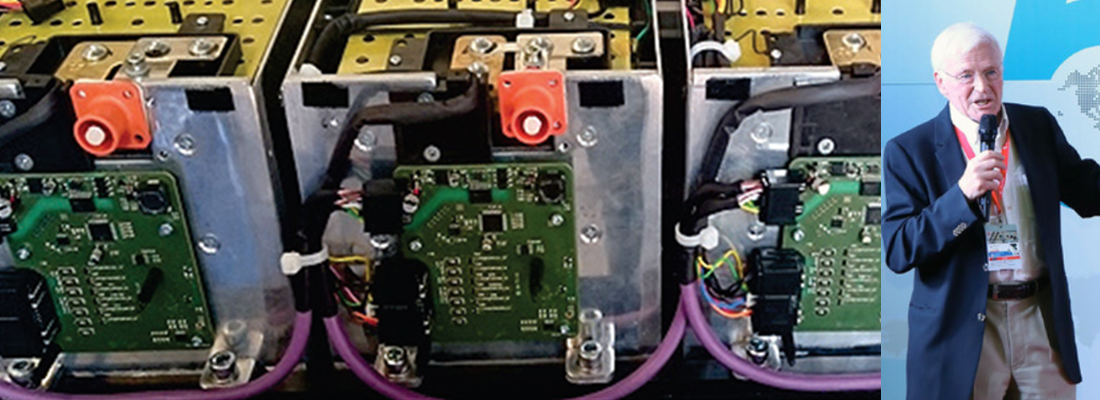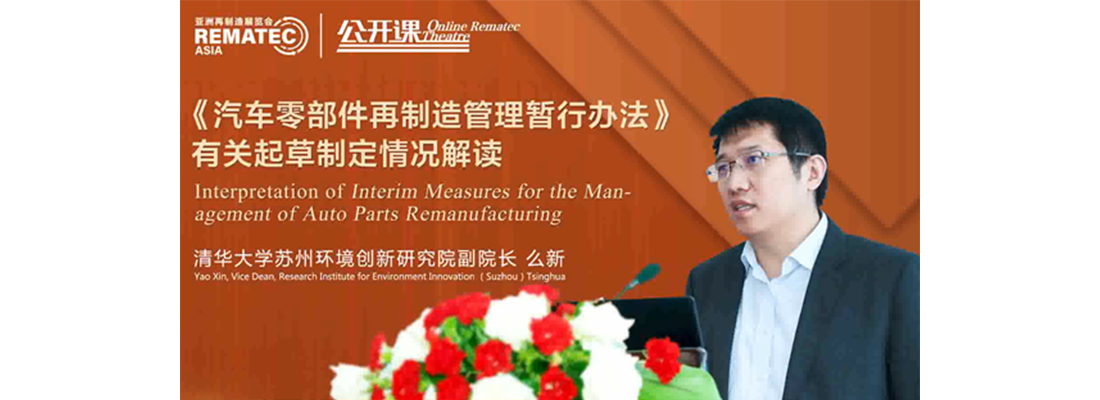Saving the world
One of the biggest names in remanufacturing, Nabil Nasr, is lead author of a UN report which answers several burning questions. He tells Adam Hill about some of the key points of the research.
How much is remanufacturing worth to a company? How much does it save the environment? How can you replicate reman systems? What do policy makers need to do in order to encourage wider take-up? Before October, these questions were tough to answer. Since the publication of the United Nations Environment Programme (UNEP) International Resource Panel (IRP) report on the circular economy, they have become easier.
This is because Redefining Value - The Manufacturing Revolution: Remanufacturing, Refurbishment, Repair and Direct Reuse in the Circular Economy is the first attempt to quantify the financial impact of activities – such as reman – which are designed to extend the life cycle of products.
Taking various examples from different countries, it examines the impact of remanufacturing, refurbishment, repair and reuse – the four so-called ‘value-retention processes’ (VRPs). The report looks at three sectors – industrial printers, vehicle parts and heavy-duty and off-road (HDOR) equipment – and demonstrates how VRPs (including reman) decrease the overall product cost, reduce the amount of new material needed, lower emissions, cut waste and create jobs. (On the latter point, remanufacturing actually increased skilled labour hours by up to 120% in comparison to linear production).
VRPs “may not always be the optimal circular economy strategy for a firm to pursue, and the appropriateness of VRPs must be assessed on a product by- product basis”. But where they are the right course to follow, VRPs “generate substantially higher economic, environmental and social value”.
This is powerful stuff for an industry such as remanufacturing, which is struggling to make its case in a world which doesn’t really understand what the word means. The report is coauthored by Nabil Nasr, associate provost and director of Rochester Institute of Technology’s Golisano Institute for Sustainability (GIS), and Jennifer Russell, a former PhD student in sustainability of Nasr’s at GIS.
In a presentation at the RIC-RIT World Remanufacturing Conference, Russell explained that it is critical to differentiate the level of value versus the level of cost that these processes provide manufacturers. She believes the term ‘VRP’ will be key to bringing the remanufacturing story to a wider audience - particularly to business leaders who need to show how reman can create economic opportunities for their companies in addition to the environmental benefits.
The report urges businesses to adopt VRPs – including reman - if they are serious about “taking a leadership position on sustainability and circular economy and interested in the economic and environmental benefits that can be achieved”. These include cutting industrial waste by 80-99% in some sectors and reducing greenhouse gas emissions by 79-99%.
The report also seeks to understand why adoption levels of VRPs are low around the world – and to identify opportunities to meaningfully alleviate barriers and increase adoption. It has certainly caught the imagination since it was fully unveiled in October at the World Circular Economy Forum in Yokohama, Japan. “It’s been very interesting,” Nasr tells ReMaTecNews. “There are a lot of policy makers – specifically from the European Union – who are very interested to learn more on the policy actions. And a lot of industry is very interested.”
Nasr has also had enquiries from companies which are not currently involved in remanufacturing but want to understand more about the different business opportunities laid out in the report. “A lot of their questions are related to the models: how it would work, would it be cost-effective, and so on,” Nasr explains.
The report shies away from offering a blueprint since there is no one-size-fits all approach. But, he points out: “Now we can say: ‘In this sector, this is how it works, under these circumstances’.” Currently, remanufacturing accounts for only 2% of production in the US, and 1.9% in Europe. The surprisingly small figures mean that – if nothing else – there is certainly room for growth. The report suggests that the low adoption rate is explained by manufacturers having limited knowledge about the possibilities in the value chain, for example with reverse logistics. “VRP adoption can further be complicated by regulatory barriers, a lack of customer awareness, limited technological capacity, or inadequate collection infrastructure - barriers that can be overcome through business model innovation, collaboration and engaging policy makers,” it adds.
“I’ve been in the industry for 29 years and there is a lack of information about the potential contribution of remanufacturing at local, country and global level,” Nasr confirms. “So many organisations definitely didn’t understand how a model could be developed.” The fact that the work of other sectors, doing different things, could be applied to their own business has been a revelation to some.
Putting concrete figures onto reman’s contribution was crucial, he believes. “We thought this would be a game changer. We anticipated that it would help because now people have evidence at a global, local and sector level. That is going to get their attention. Some of it was that companies did not know there was going to be such a huge value in remanufacturing.”
For managers keen to convince their own directors of the importance of the circular economy, the report provides some useful input. “The frustrating thing is that you needed to bring the potential value to their attention,” says Nasr. “That means you can have the discussion at the higher level with decision makers.”
Collaboration between companies is required if circular economy models are to be scaled up, the report finds. Policy makers have to be engaged if systemic barriers such as regulation which constrains reman and other VRPs is to be overcome. In much the same way, policy makers are the key to helping with consumer awareness of reman’s benefits and will also have to be shown the benefits of the circular economy if the lack of infrastructure and technological capacity are to be tackled.
And Nasr is certainly clear-eyed about one of the main challenges that remains for the remanufacturing sector. Consumer awareness is a problem wherever you look, the report warns: “Customer interest in and awareness of VRPs needs to be increased, specifically regarding the quality of remanufacturing.” “We still have a lot of work to get the average person to understand – and to get acceptance of reman by the consumer,” Nasr concludes. “That’s one of the barriers we have.”






